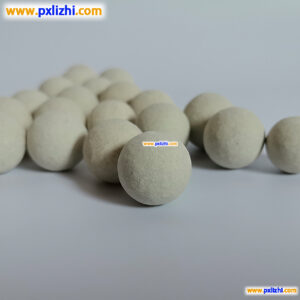
# Ceramic Ball Applications in Modern Industry
## Introduction to Ceramic Balls
Ceramic balls are precision-engineered spherical components made from advanced ceramic materials such as alumina, zirconia, or silicon nitride. These high-performance balls offer exceptional properties that make them indispensable in various industrial applications.
## Key Properties of Ceramic Balls
The unique characteristics of ceramic balls include:
- Extreme hardness and wear resistance
- Excellent corrosion resistance
- High temperature stability
- Low density compared to metal alternatives
- Electrical insulation properties
- Non-magnetic characteristics
## Major Industrial Applications
1. Bearing Systems
Ceramic balls are widely used in high-performance bearing applications where traditional steel balls would fail. Their superior hardness and smooth surface finish reduce friction and wear, leading to longer service life in demanding environments.
2. Valve Components
In the oil and gas industry, ceramic balls serve as critical components in ball valves, providing exceptional resistance to corrosive fluids and high-pressure conditions. Their dimensional stability ensures reliable sealing performance over extended periods.
3. Grinding Media
The mining and pharmaceutical industries utilize ceramic balls as grinding media in ball mills. Their high density and wear resistance make them ideal for particle size reduction while minimizing contamination.
4. Aerospace Applications
Ceramic balls find applications in aerospace systems where weight reduction is crucial. Their combination of strength and lightness makes them perfect for guidance systems, actuators, and other precision mechanisms.
5. Medical Devices
In the medical field, ceramic balls are used in prosthetic joints and surgical instruments due to their biocompatibility and resistance to bodily fluids. Zirconia ceramic balls are particularly popular for hip replacements.
## Advantages Over Metal Alternatives
When compared to traditional metal balls, ceramic balls offer several distinct advantages:
- 50-70% lighter than steel balls, reducing rotational inertia
- 3-10 times longer service life in abrasive environments
- Maintain dimensional stability across wide temperature ranges
- Resistant to chemical attack from acids, alkalis, and solvents
- Eliminate the risk of galvanic corrosion in mixed-material systems
## Future Trends in Ceramic Ball Technology
The ceramic ball market continues to evolve with advancements in material science and manufacturing techniques. Emerging trends include:
- Development of hybrid ceramic-metal composite balls
- Improved manufacturing precision for nanoscale applications
- Expansion into renewable energy systems
- Customized surface treatments for specific applications
- Integration with smart sensor technologies
Keyword: ceramic ball
## Conclusion
Ceramic balls have become essential components across multiple industries due to their unique combination of properties. As technology advances, we can expect to see even broader adoption of ceramic ball solutions in new and demanding applications, driving efficiency and performance in modern industrial systems.